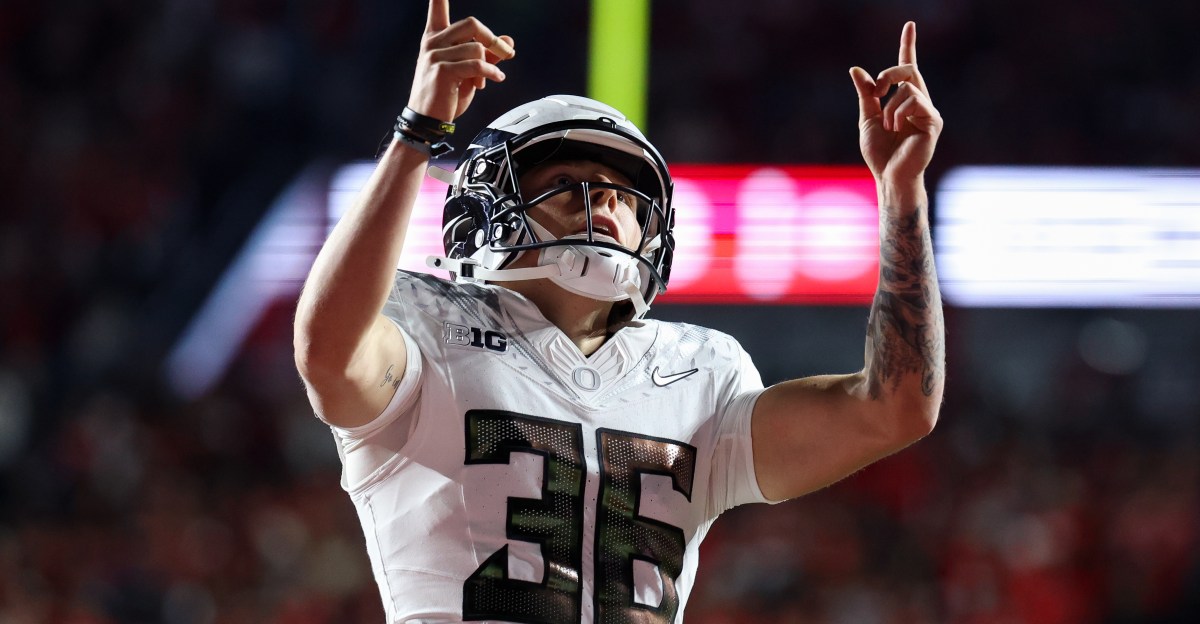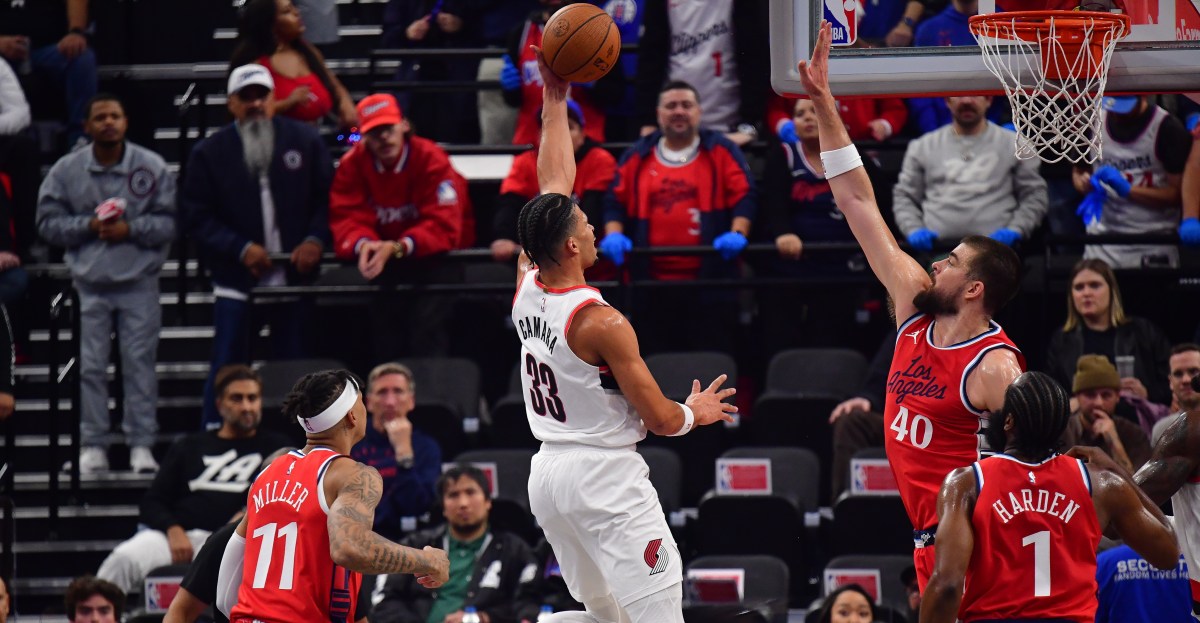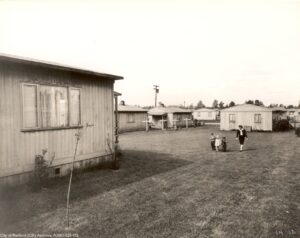Grading the Trail Blazers: Offense
The Portland Trail Blazers just completed their 2024-25 season with a 36-46 record. That was better than they were predicted to do when pundits and oddsmakers forecasted the campaign last summer. But what, specifically, did the Blazers do better and what work remains to be done?
Over the next couple of days, we’re going to review the season with an eye towards answering those questions. This might put the year in perspective. It also opens a window into the franchise’s mind this summer. What holes do they need to fill most via the NBA Draft, free agency, and trades?
We’re going to start today with Portland’s offense, by the numbers. Each category has the statistic name, performance, NBA rank, and in parentheses the number and rank from last season.
Doing Well
Offensive Rebounds Per Game 13.4—2nd (Last Year: 12.6—2nd)
Offensive Rebounding Percentage 29.2—2nd (Last Year: 27.5—3rd)
Offensive rebounding has been a focus point for the Blazers over the past couple seasons. They continue to be good at it. Only the Houston Rockets outshine them. In offensive rebounding terms, that’s like saying you’re the second-best band of all time next to the Beatles. Finishing just behind John, Paul, George, and Alperen Sengun is not bad.
The pain point here is that offensive rebounding depends on a mistake, a missed shot, in order to take effect. All of those extra possessions the Blazers are generating are great, but that doesn’t mean the team is using them efficiently.
The Middle Ground
Points in the Paint 48.8—15th (46.8—26th)
Fast Break Points 15.8—13th (12.7—22nd)
Free Throw Attempts 22.2—12th (20.5—22nd)
In the middle ground lie three offensive stats that can be roughly summed up as “easier points”. The Blazers improved this year scoring in the paint, on the run, and sort of at the foul line, at least in generating aggregate attempts.
Their improvement in the lane and on the break was particularly striking. They rose from 26th to 15th in the league generating points inside, 22nd to 13th in fast break points.
The numbers reflect a little bit of Head Coach Chauncey Billups’ old-school approach. If you’re going to improve the offense, start with the basics. It was a point of emphasis preseason and the Blazers actually did ok living it out.
A couple caveats remain. Three-point shooting, a critical source of extra points in the modern game, is conspicuously missing from the list. Also, though the Blazers improved, they went from horrible to mediocre. The numbers still aren’t really good. These are the kind of stats that contending teams would take for granted as a by-product of their actual offense. (“Of course we do fine in paint and transition points. Duh. Doesn’t everybody?”) This IS the Blazers’ actual offense. There’s nothing built on top. That’s kind of like showing up to the big race, proud that you got your shoes on. Ummm, yes. We kind of assumed that. Now are you actually going to compete?
Bad News
Points Per Game 110.9—22nd (106.4—29th)
Offensive Efficiency 107.7—24th (104.5—29th)
Field Goal Percentage 45.0—26th (43.9—29th)
Effective Field Goal Percentage 52.1—25th (50.3—30th)
Three-Point Percentage 34.2—26th (35.5—30th)
Free Throw Percentage 76.2—26th (79.1—9th)
Assists Per Game 23.8—30th (23.1—30th)
Assists Per Possession .231—27th (.227—30th)
Turnovers Per Game 16.0—29th (15.2—29th)
Turnovers Per Play 13.7%—29th (13.3%—27th)
Here comes the real headache. For all their improvement, the Blazers are still lacking in some fundamental areas.
Treat points per game lightly. Portland made a nice improvement there. 22nd in the league could be seen as the low end of mediocre instead of flat-out bad. Besides, aggregate points are a symptom of all these other things, not a root cause.
Instead, look at the efficiency and percentage numbers. Porland is 26th out of 30 teams in Field Goal Percentage, Three-point Percentage, and Free Throw Percentage. They’re just not hitting shots. That’s tanking their efficiency and taking the bite out of every offensive improvement besides offensive rebounding (which, paradoxically, it’s probably helping). Absolutely nothing is going to go right until the Blazers start hitting the shots their offense is generating.
The assist and turnover numbers betray, perhaps exacerbate, the problem. Portland isn’t a selfish team. They’re not overtly isolation-focused. Ideally they move the ball looking for the first open shot. Sometimes they get bogged down into bail-out iso sets with Anfernee Simons or Jerami Grant, but that’s only half the story. Their assist numbers are low because they’re not hitting the open shot at the end of their passes.
The Blazers may have a chicken-and-egg problem here, though. They don’t field a true, NBA-ready point guard. Simons is a combo guard at best. Deni Avdija runs offensive sets but he’s a converted small forward. Scoot Henderson has been making strides but isn’t starting. Dalano Banton is more of a scorer. Nowhere on that list is a true point guard in the Chris Paul/Tyus Jones mold.
Positionless offense is generating Portland plenty of interesting opportunities. Attacking plays can come from anyone, anywhere. But so can turnovers, miscues, and bricks. Right now the latter are weighing more than the former.
The ray of light here is that the Blazers made improvements in several categories, going from bottom-of-the-league horrible to merely bad. Better shooters and playmakers may be able to lift them further. It’s a humble hope, but at least there’s momentum.
Next Up: Tune in tomorrow for a look at the defense by the numbers! (The news is much better there.)
Share this content:















Post Comment